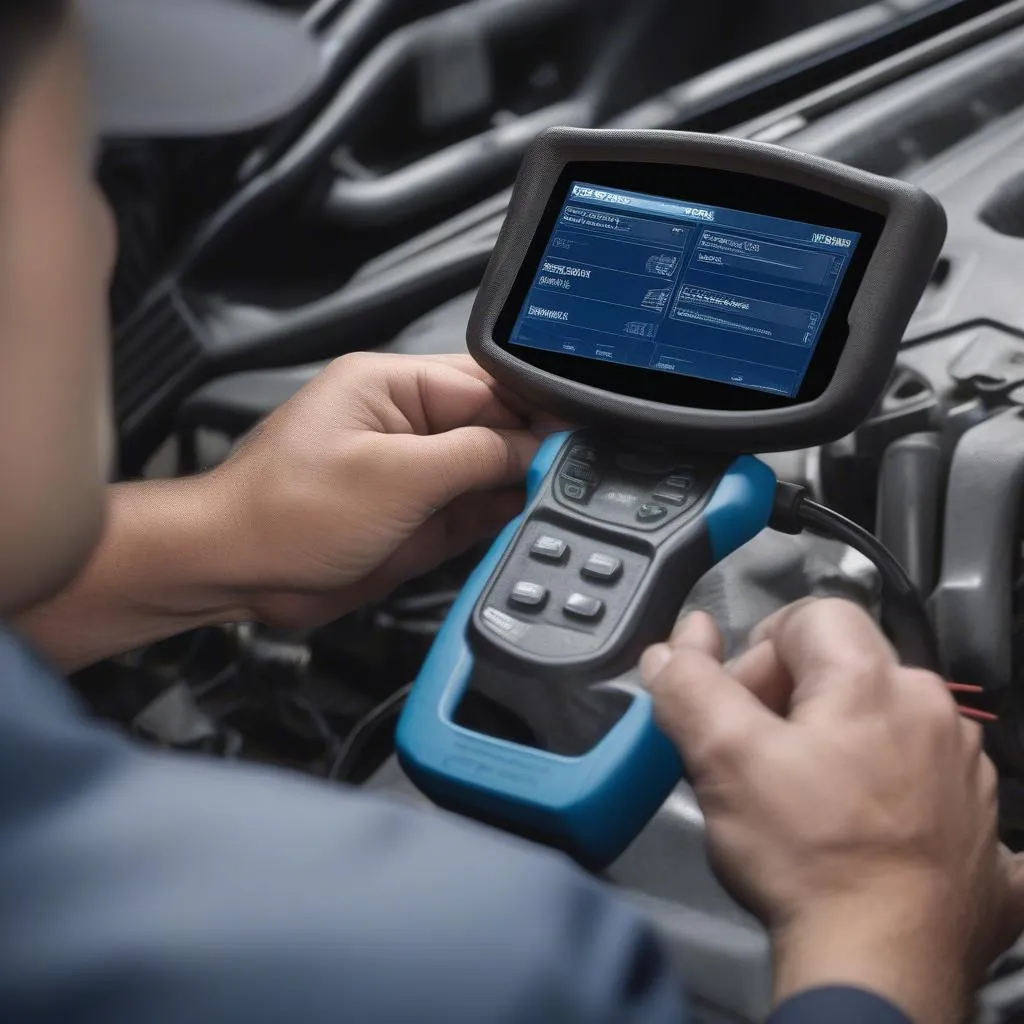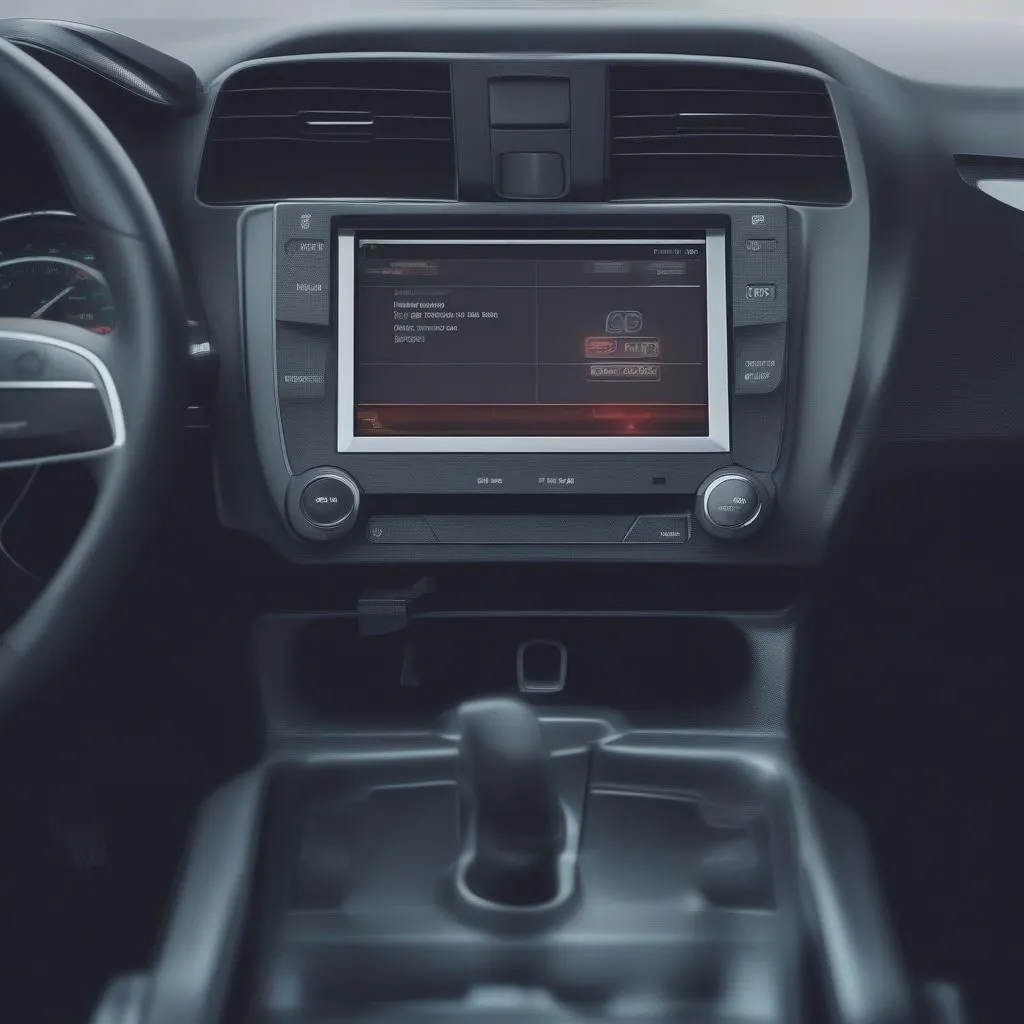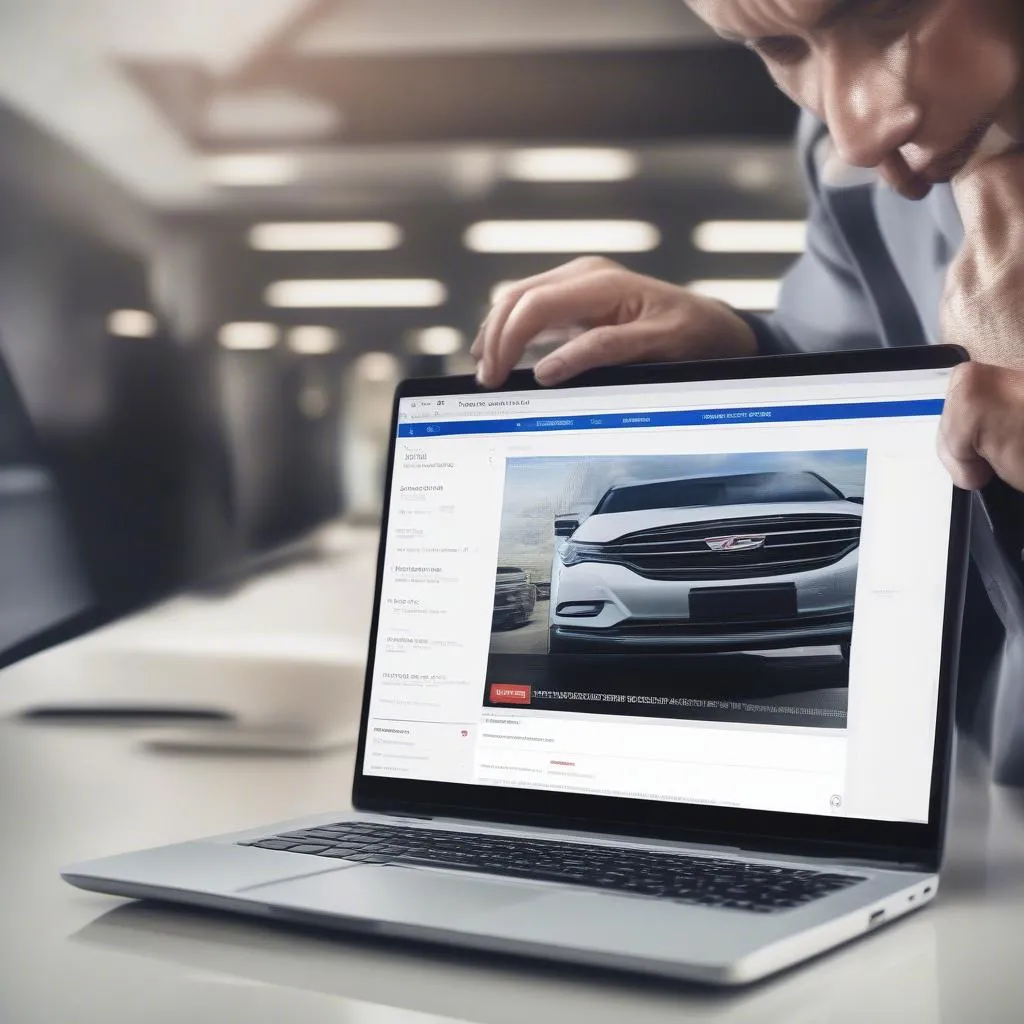Imagine this: you’re cruising down the Pacific Coast Highway in your beloved Ford Mustang, California sun warming your face, when suddenly, the “Check Engine” light throws a wrench into your road trip plans. Frustrating, right? We’ve all been there. But before you start picturing hefty repair bills, what if you had the power to understand what your car was trying to tell you? That’s where a scan tool comes in.
Decoding the Mystery: What Does “How to Use a Scan Tool on a Car” Even Mean?
For many car owners, the phrase “scan tool” might sound intimidating, like something only a seasoned mechanic in a Detroit garage would use. But the truth is, understanding how to use a scan tool empowers you, the everyday driver, to demystify those cryptic dashboard lights and potentially save yourself time and money.
From a mechanic’s perspective, a scan tool is like a direct line of communication with your car’s computer, or ECU (Electronic Control Unit). It’s a powerful diagnostic tool that allows you to read and interpret the error codes your car throws, giving you insights into potential issues.
Technically speaking, a scan tool, also known as an OBD2 scanner (On-Board Diagnostics), plugs into your car’s OBD2 port (usually located under the steering wheel) and accesses the car’s computer system.
Economically speaking? Mastering the art of using a scan tool can save you from unnecessary trips to the mechanic for minor issues, like a loose gas cap triggering that dreaded “Check Engine” light.
Unveiling the Secrets: Your Step-by-Step Guide to Using a Scan Tool
Now that we’ve demystified the “what,” let’s dive into the “how.” Using a scan tool is easier than you might think, even if you’re not a gearhead:
- Locate Your OBD2 Port: This is usually located under the driver’s side dashboard, near the steering column. It’s a trapezoidal-shaped port.
- Plug in Your Scan Tool: Turn your ignition to the “on” position (don’t start the engine) and connect your scan tool to the OBD2 port.
- Turn on the Scan Tool: Most scan tools power on automatically when connected.
- Select Vehicle Information: You’ll likely need to input your car’s year, make, and model. Some advanced scan tools might automatically detect this information.
- Read Codes: Select “Read Codes” or a similar option on your scan tool. This will display any stored or pending Diagnostic Trouble Codes (DTCs).
- Interpret Codes: This is where it gets interesting! Each code corresponds to a specific issue. Some scan tools offer brief explanations, while others might require you to look up the codes online or in a repair manual.
- Clear Codes: Once you’ve addressed the issue, you can use the scan tool to clear the codes.
Pro Tip from Dr. Emily Carter, Automotive Engineering Professor at MIT: “Don’t just clear codes without understanding what they mean! Clearing codes without fixing the underlying problem is like silencing a fire alarm without putting out the fire.”
obd2-scan-tool|OBD2 Scan Tool|A mechanic using an OBD2 scan tool to diagnose a car problem.
Navigating the Maze: Common “How to Use a Scan Tool on a Car” Questions Answered
You’re not alone in your quest for scan tool mastery. Here are some frequently asked questions to further illuminate your path:
- Can I use any scan tool on my car? While most cars manufactured after 1996 use the standard OBD2 protocol, it’s always wise to check your owner’s manual or the scan tool’s compatibility information to ensure it’s compatible with your vehicle.
- What if my scan tool shows “No Codes”? This could mean there are no current issues, or the problem is intermittent. It’s also possible the issue doesn’t trigger a code, or your scan tool isn’t reading all available codes.
- Can a scan tool fix my car? No, a scan tool is a diagnostic tool, not a repair tool. It helps you identify issues but doesn’t fix them.
- Do I need a professional mechanic to use a scan tool? Not necessarily. While some advanced functionalities might require specialized knowledge, basic code reading and clearing are manageable for most car owners.
Mastering the Road Ahead: Exploring Related Automotive Queries
As you embark on your journey into the world of car diagnostics, you might encounter related questions like:
- How to Use a Scanning Tool to Reset TPMS? Learn how to use a scan tool to reset your Tire Pressure Monitoring System (TPMS) after changing a tire or adjusting pressure. Check out our guide: [link to https://diagxcar.com/how-to-use-scanning-tool/ with anchor text “How to Use a Scanning Tool to Reset TPMS”].
- Can You Use a Scan Tool on 90s Old Cars? Discover the nuances of using scan tools on older vehicles and whether you need specific adapters: [link to https://diagxcar.com/can-you-use-a-scan-tool-on-90-old-cars/ with anchor text “Can You Use a Scan Tool on 90s Old Cars?”].
- How to Use a Scan Tool to Program a Car’s PCM? Delve into the advanced functionalities of using a scan tool for programming your car’s Powertrain Control Module (PCM): [link to https://diagxcar.com/how-to-use-scan-tool-to-program-a-cars-pcm/ with anchor text “How to Use a Scan Tool to Program a Car’s PCM?”].
Your Diagnostic Journey Starts Now
car-dashboard-with-check-engine-light|Car Dashboard with Check Engine Light|A car dashboard with the check engine light illuminated, indicating a potential issue.
Understanding how to use a scan tool on a car isn’t just about fixing problems; it’s about empowering yourself as a car owner. It’s about transforming from a passenger in your own vehicle to a confident driver equipped with the knowledge to navigate the road ahead.
Have questions or need personalized guidance on using diagnostic tools? Our team of automotive experts is just a message away. Contact us on WhatsApp at +84767531508 for 24/7 support on installing and using diagnostic software. We’re here to help you unlock the secrets of your car!
Ready to explore more automotive insights? Dive into our collection of informative articles [link to https://diagxcar.com/ with anchor text “here”] and empower yourself with the knowledge to conquer any automotive challenge!


